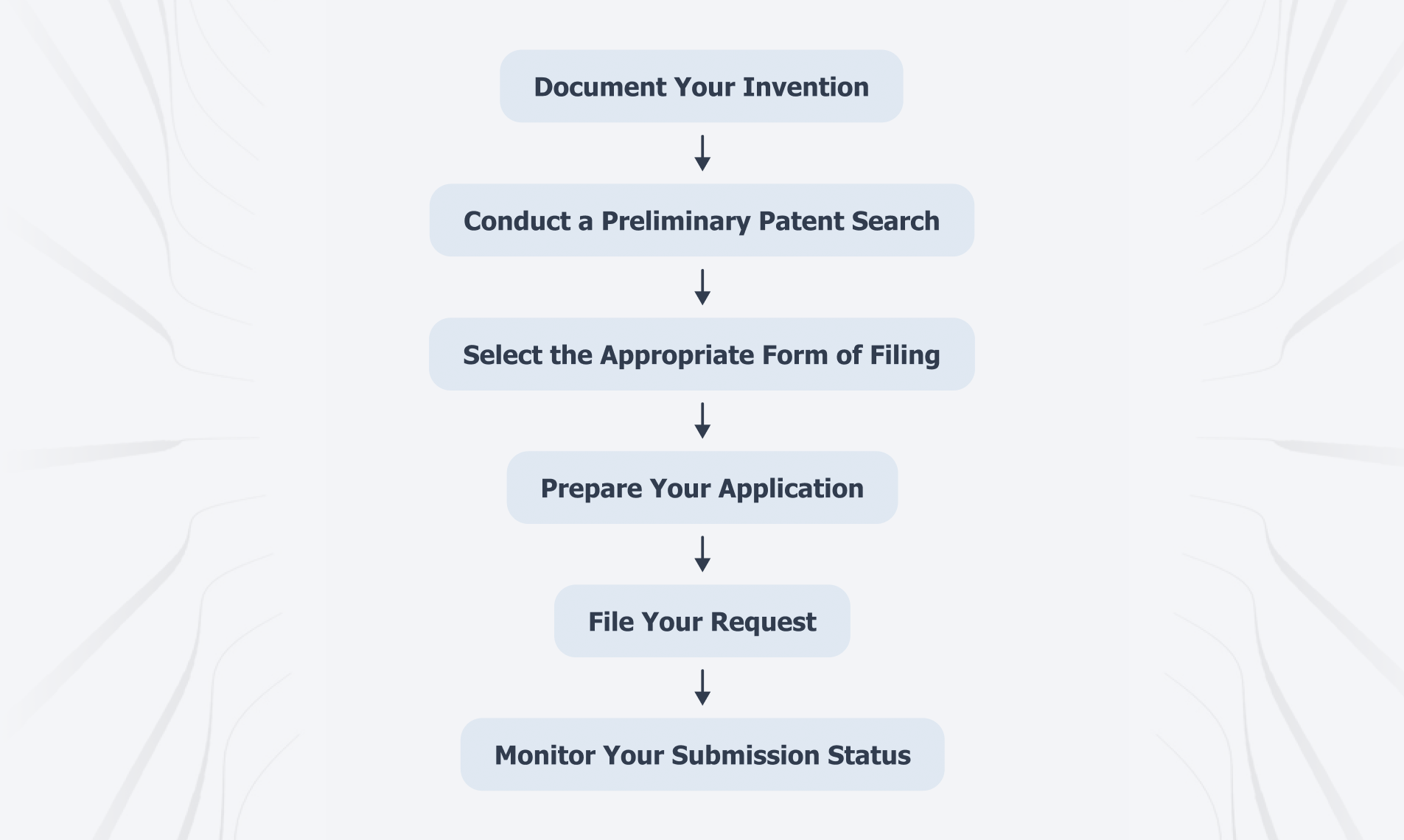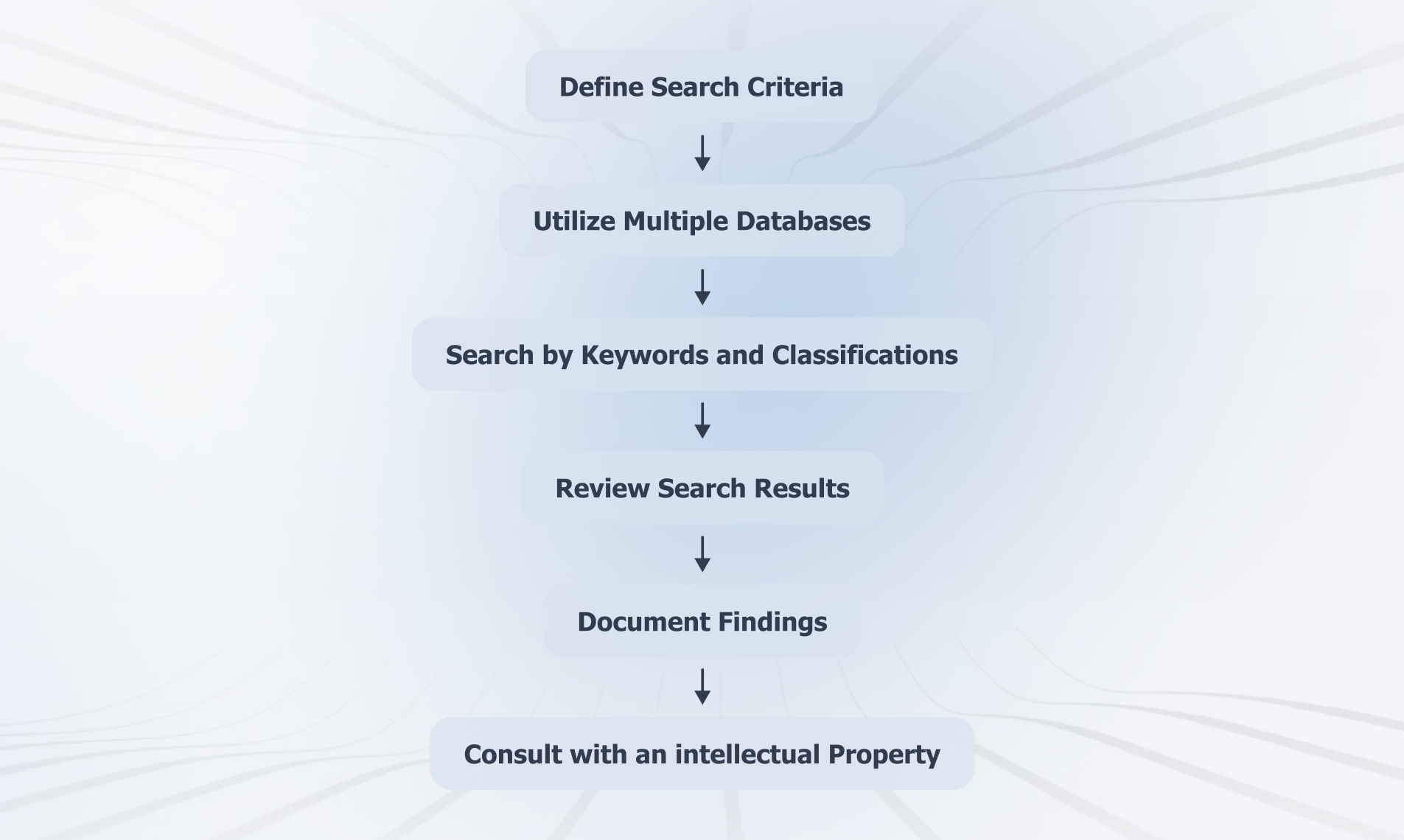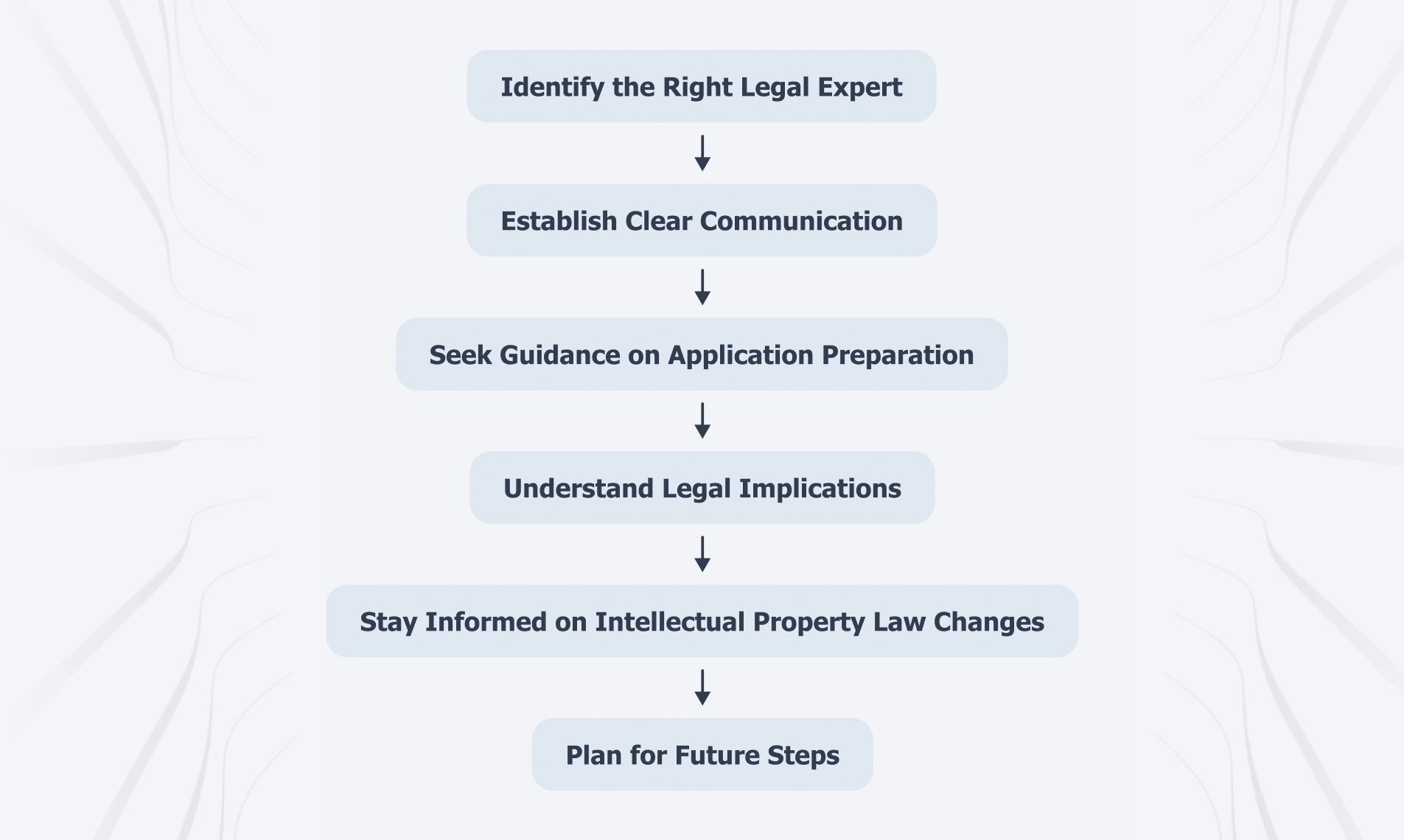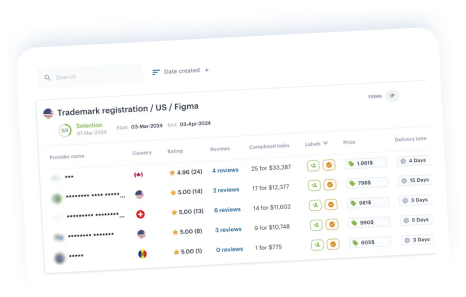Overview
Pending patents can be effectively managed and protected through strategic documentation, thorough searches, and collaboration with legal experts. This approach ensures that intellectual property rights are upheld during the application process.
Understanding the implications of pending patents not only safeguards innovations but also enhances a company’s market position and credibility. The importance of maintaining comprehensive records and seeking legal guidance cannot be overstated, as these practices help navigate potential challenges.
By prioritizing these strategies, businesses can solidify their standing in the competitive landscape.
Introduction
In a competitive landscape where innovation drives success, understanding the intricacies of patent pending status is paramount for businesses seeking to protect their intellectual property. This status not only serves as a legal safeguard against potential infringements but also establishes a priority date, providing inventors with a strategic advantage in the marketplace.
As companies navigate the complexities of patent applications, the importance of thorough documentation, effective search strategies, and collaboration with legal experts cannot be overstated.
By harnessing the right tools and knowledge, businesses can enhance their chances of securing patents, ultimately paving the way for growth and investment opportunities.
Understand Patent Pending Status
The indication of pending patents signifies that a patent application has been submitted to the relevant patent office, such as the USPTO, and is currently under review. This status serves multiple critical functions:
- Legal Notice: It acts as a public declaration that an invention is claimed as proprietary, effectively deterring potential infringers from copying the idea. This legal notice is vital for safeguarding innovations, especially for start-ups that may fear imitation as they gain visibility in the market. As noted by Garima Sodhi, “Fear of imitation comes to start-ups only when it reaches a point where it has gained some visibility.” iPNOTE’s comprehensive AI-driven IP management platform enhances this protection by automating task creation and reminders, ensuring that all necessary steps are taken promptly.
- Priority Date: The submission date of the application establishes a priority date, which is a cornerstone of intellectual property law. If another entity submits a similar application after this date, they may be barred from securing a grant, thus safeguarding the original inventor’s rights. iPNOTE’s streamlined role-based access control allows corporate IP managers to efficiently track and manage these critical dates across their IP portfolio.
- Market Advantage: Companies can utilize pending patents to strengthen their market position. This situation signals to investors and partners that the business is actively pursuing intellectual property protection, which can enhance credibility and attract investment. For example, a start-up with pending patents for its groundbreaking software intends to license the technology once it is approved, demonstrating how this situation can be a strategic resource. The encouraging environment around start-ups is crucial for boosting intellectual property activity, as it promotes innovation and motivates companies to pursue protection for their creations. iPNOTE’s cost-effective and automated global IP management solutions further support this endeavor by providing access to a large selection of international providers, ensuring that businesses can manage their IP efficiently and affordably.
- Impact on Business Strategy: The consequences of pending intellectual property rights extend to business strategy. Companies frequently utilize this condition to guide their market strategy, as illustrated in case studies such as the renovation of the roof structure of the Old Town Hall in Košice. Here, the evaluation of technological and cost parameters was crucial for decision-making, illustrating how strategic insights can guide businesses in optimizing their operations and investments. iPNOTE’s AI-powered chat interface facilitates streamlined IP portfolio reporting and risk management, enabling informed decision-making.
- Expert Opinions: Intellectual property lawyers highlight the significance of pending applications, stating that it not only safeguards innovations but also boosts a firm’s competitive advantage. This position can be a decisive factor in negotiations and partnerships, as it demonstrates a commitment to safeguarding intellectual property. User testimonials highlight how iPNOTE has been instrumental in providing a clear, streamlined process for managing various IP needs, reinforcing the platform’s reliability and effectiveness.
In summary, grasping the subtleties of pending rights is crucial for effectively overseeing and safeguarding intellectual property during the application process. This knowledge empowers businesses to navigate the complexities of IP management while maximizing their market potential. Recent statistics show that numerous start-ups are actively seeking pending patents, acknowledging their advantages in creating market presence and obtaining investment opportunities.

Follow the Steps in the Patent Pending Process
To effectively manage your patent pending status, adhere to the following steps:
- Document Your Invention: Maintain comprehensive records of your invention process, including sketches, descriptions, and modifications. This documentation is essential for proving the uniqueness of your invention and can greatly influence the success of your submission. As Xiaoxia Zhang, an innovator at Qualcomm, states, “Thorough documentation is essential for enhancing network performance and efficiency, and the same principle applies to intellectual property submissions.”
- Conduct a Preliminary Patent Search: Prior to filing, execute a preliminary search to confirm the novelty of your invention. Utilize databases such as the USPTO or Google Patents to identify existing patents. Success rates for initial searches can differ, but comprehensive searches frequently result in improved outcomes during the process. In fact, statistics indicate that effective preliminary searches can enhance success rates significantly.
- Select the Appropriate Form of Intellectual Property Filing: Decide whether to submit a provisional or non-provisional filing. A temporary submission enables you to assert pending patents status for 12 months without a formal claim, offering time to improve your invention and collect further documentation.
- Prepare Your Application: Compile all necessary documentation, including claims, drawings, and an abstract. Ensure that your submission adheres to all legal requirements, as incomplete entries can lead to delays or rejections. The case study titled ‘International Contributions to US Innovations‘ emphasizes the significance of proper documentation methods, observing that nations such as Japan and China greatly influence the U.S. intellectual property environment.
- File Your Request: Submit your request through the relevant intellectual property office, ensuring that all fees are paid and forms are correctly completed. Prompt submission is crucial to uphold your application in progress.
- Monitor Your Submission Status: After filing, regularly check the status of your submission via the office’s online portal. Staying informed about updates or required actions can help you respond promptly and effectively.
Along with these measures, it is vital to take into account the privacy and security of your personal information during the application process. iPNOTE is committed to protecting your information, implementing strict access controls and utilizing secure services to ensure that your data remains confidential. By following these steps and utilizing modern tools such as iPNOTE’s technology, which simplifies IP management while protecting your data, you can navigate the application process with greater confidence and efficiency, ultimately improving your chances of obtaining intellectual property protection.

Conduct a Comprehensive Patent Search
A comprehensive patent search involves several essential steps that can significantly impact the success of your invention:
- Define Search Criteria: Clearly outline the key features and aspects of your invention to guide your search effectively.
- Utilize Multiple Databases: Leverage various intellectual property databases, such as USPTO, Espacenet, and Google Patents, to gather a wide range of information.
- Search by Keywords and Classifications: Enhance your search results by utilizing relevant keywords and classifications. Consider employing synonyms and related terms to broaden your search scope, especially when researching pending patents.
- Review Search Results: Analyze the results meticulously to identify any existing intellectual property that may conflict with your invention. Pay close attention to the claims and descriptions of pending patents to avoid potential pitfalls.
- Document Findings: Keep a detailed record of your search results, noting any pertinent registrations and their implications for your application.
- Consult with an Intellectual Property Expert: If necessary, seek assistance from a legal professional or agent to interpret your findings and assess the eligibility for protection of your invention. This step can provide invaluable insights and enhance your chances of securing intellectual property rights.

Collaborate with Legal Experts for Guidance
Working with legal specialists is essential for effectively managing the complexities of the pending process. Here are key strategies to enhance this collaboration:
- Identify the Right Legal Expert: Select attorneys or agents with specialized experience in the field of your invention. Their expertise can significantly influence the success of your application. Intellectual property attorneys registered on platforms like iPNOTE can assist in conducting thorough searches and analyses to develop a robust strategy for protecting your intellectual property, including resolving disputes and filing lawsuits against infringers.
- Establish Clear Communication: Clearly articulate the specifics of your invention and any concerns regarding the intellectual property process. Efficient communication fosters a constructive relationship and ensures that your advisor fully comprehends your needs.
- Seek Guidance on Application Preparation: Collaborate with your attorney to create a comprehensive application that complies with all regulatory standards. This collaboration can enhance the quality of your submission and increase the likelihood of approval. Lawyers can also assist with registering trademarks, inventions, and designs, ensuring all aspects of your intellectual property are addressed.
- Understand Legal Implications: Engage in discussions about the potential ramifications of your application’s pending status, including issues related to enforcement and infringement. This understanding is vital for strategic planning, particularly as specialists can assist you during conflicts concerning intellectual property infringements.
- Stay Informed on Intellectual Property Law Changes: Regular consultations with your attorney will keep you updated on any modifications in intellectual property regulations that could affect your application. Staying informed is crucial for maintaining compliance and optimizing your strategy.
- Plan for Future Steps: Collaborate with your attorney to outline a strategy for post-approval actions, including licensing opportunities and enforcement measures. This proactive approach can maximize the value of your patent once granted.
Statistics indicate that patenting is often deferred due to a lack of time and resources, with many start-ups prioritizing market traction and revenue generation first. This underscores the importance of working with legal professionals, as they can help simplify the process and alleviate some of these pressures.
Additionally, consider the case study of Eagle USA, which sought to improve its lighting conditions while enhancing employee safety. Their collaboration with legal experts during the upgrade process illustrates how strategic partnerships can lead to successful outcomes. By implementing these strategies, you can enhance your chances of success in the patent application process.
Conclusion
Understanding patent pending status is essential for businesses seeking to protect their innovations and leverage intellectual property for a competitive edge. This article elucidates the multifaceted advantages of this status, including:
- Legal protection
- The establishment of a priority date
- The enhancement of market credibility
By meticulously documenting inventions, conducting comprehensive patent searches, and collaborating with legal experts, companies can navigate the complexities of the patent application process with increased confidence.
Furthermore, the integration of technology, such as iPNOTE’s AI-driven solutions, streamlines IP management and boosts overall efficiency. This approach not only simplifies the process but also ensures that businesses can effectively manage their intellectual property while mitigating risks. As emphasized, a proactive stance in understanding and utilizing patent pending status can significantly influence a company’s growth trajectory and investment potential.
Ultimately, embracing the patent pending process transcends mere legal formality; it constitutes a strategic maneuver that positions businesses for success in a competitive landscape. By prioritizing intellectual property protection, companies can cultivate innovation, attract investment, and secure their market presence, thereby paving the way for sustainable growth and long-term success.
Unlock Your Competitive Edge with Patent Pending Status. Start now with iPNOTE’s AI-driven solutions and safeguard your innovations effortlessly.
Frequently Asked Questions
What does the indication of pending patents signify?
Pending patents indicate that a patent application has been submitted to the relevant patent office and is currently under review, serving multiple critical functions.
How does a pending patent act as legal notice?
It serves as a public declaration that an invention is claimed as proprietary, deterring potential infringers from copying the idea, which is especially important for start-ups concerned about imitation.
What is the importance of the priority date established by a pending patent application?
The submission date of the application establishes a priority date, which is crucial in intellectual property law. If another entity submits a similar application after this date, they may be barred from securing a grant, thus protecting the original inventor’s rights.
How can pending patents provide a market advantage for companies?
Companies can use pending patents to strengthen their market position, signaling to investors and partners that they are actively pursuing intellectual property protection, which can enhance credibility and attract investment.
In what way do pending patents impact business strategy?
Companies often use the status of pending intellectual property rights to guide their market strategy, helping them make informed decisions about optimizing operations and investments.
What do intellectual property lawyers say about the significance of pending applications?
Intellectual property lawyers emphasize that pending applications not only safeguard innovations but also enhance a firm’s competitive advantage, which can be crucial in negotiations and partnerships.
How does iPNOTE support businesses in managing pending patents?
iPNOTE offers a comprehensive AI-driven IP management platform that automates task creation, reminders, and provides access to global IP management solutions, helping businesses manage their intellectual property efficiently and affordably.
Why are start-ups actively seeking pending patents?
Start-ups recognize the advantages of pending patents in creating market presence and obtaining investment opportunities, which can significantly boost their growth potential.






